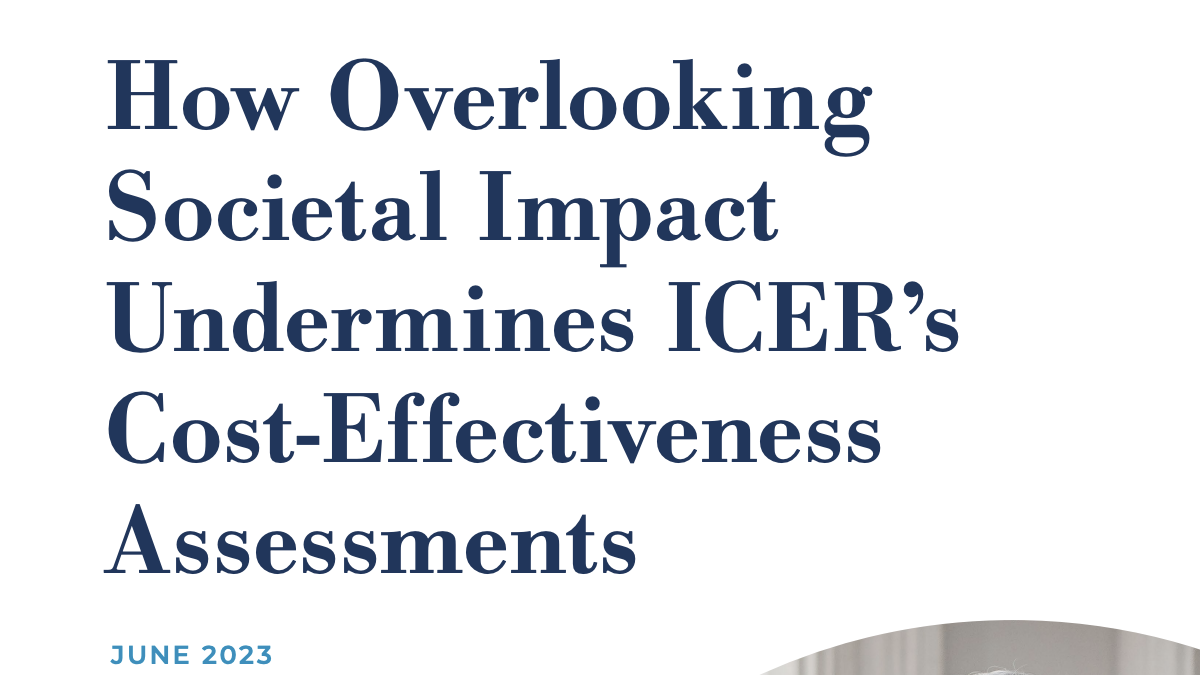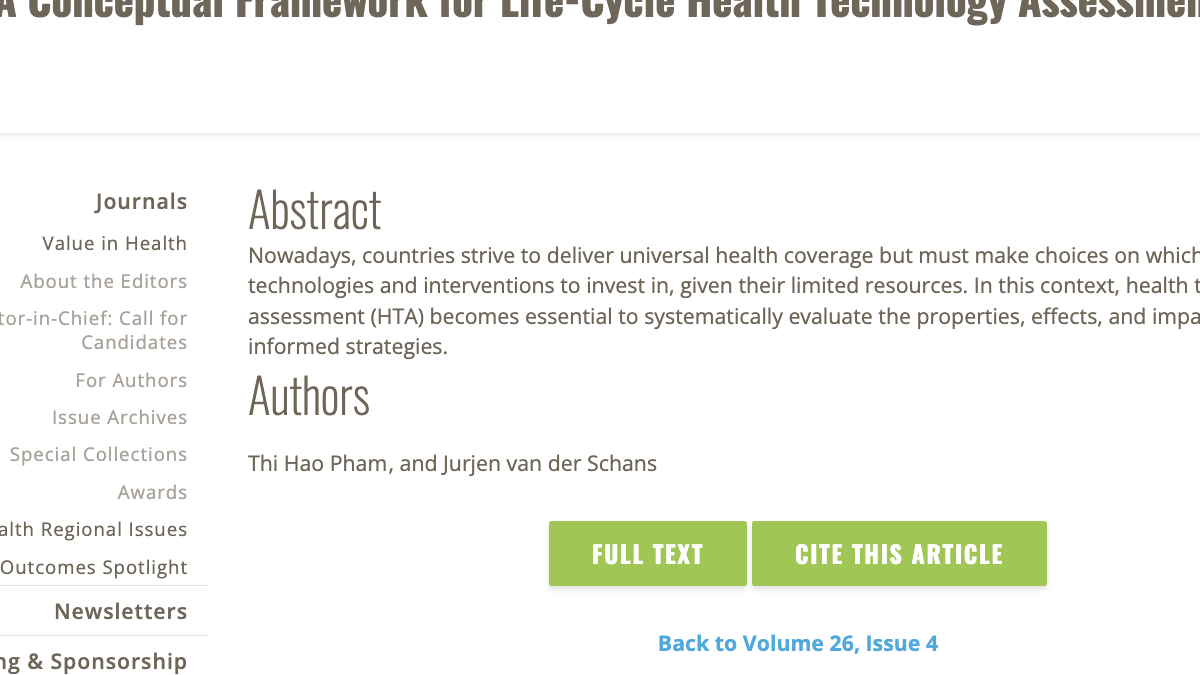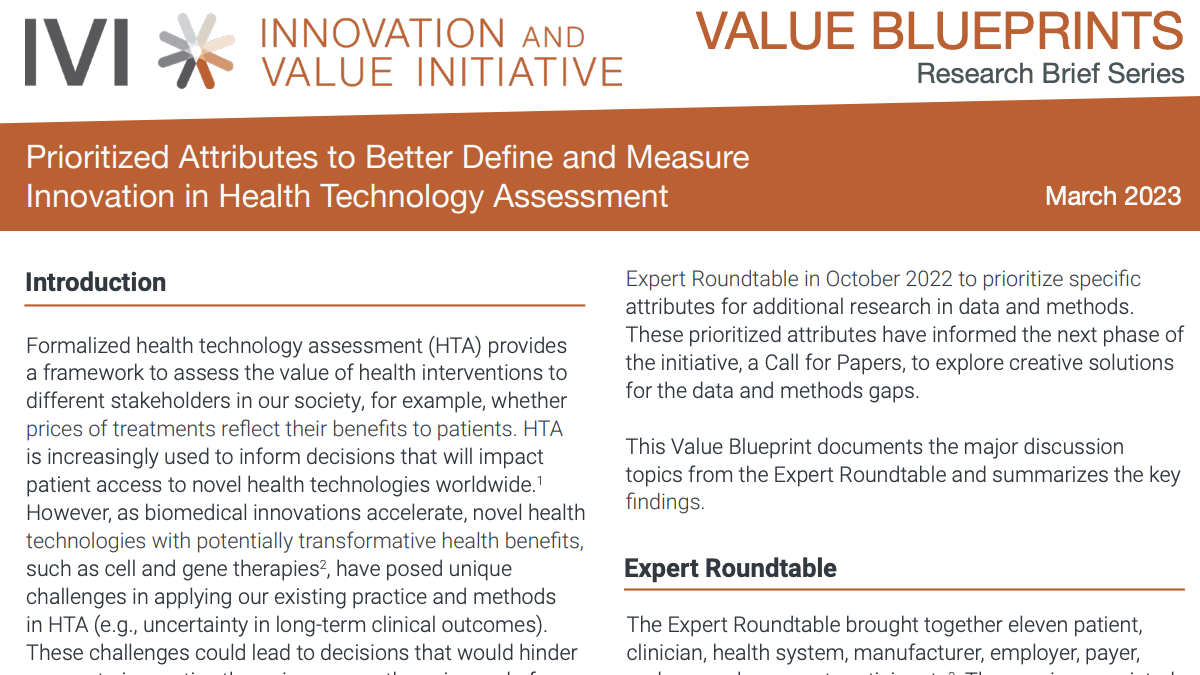It’s that time again. The controversial Institute for Clinical and Economic Review is examining its value framework, the rules and assumptions it uses to analyze new drugs’ cost effectiveness. How, ICER asked, can we improve our approach in 2020 and beyond?
ICER’s request for public comment allows patient advocates to weigh on a system that too often overlooks the qualitative, personal value of medicine in favor of a one-size-fits-all analysis – yielding findings that are misused to block patients from new therapies. In a comment letter, the Institute for Patient Access made it clear: If ICER wants to improve its framework, it can begin by addressing some fundamental shortcomings.
1. Accommodate the unique burden of each disease
When reviewing medical advances for rare diseases, ICER can apply its “ultra-rare” framework. This means relaxing cost-effectiveness thresholds to reduce bias against high-cost treatments for small-population diseases. By increasing the likelihood that the drugs are found cost effective, and adequately covered by health plans, adjusted thresholds make treatment more available for patients.
Which begs the question: Wouldn’t other patient populations benefit from a threshold that accommodates the unique burden of their disease? Rarity should not be the only criteria ICER considers when adjusting definitions of cost-effectiveness. ICER could also adjust the threshold ranges to reflect considerations like a condition’s co-morbidities, a treatment’s impact on adherence rates, a condition’s impact on patients’ quality of life, and the unquantifiable costs and burdens that patients must live with, such as pain. These considerations can vary significantly depending on the condition and treatment.
2. Rely on real-world evidence – and wait until that evidence is available.
As the FDA explains, “The true picture of a product’s safety actually evolves over the months and even years that make up a product’s lifetime in the marketplace.” So why does ICER repeatedly try to evaluate drugs’ cost-effectiveness before complete data is available? Even while the drug is still in clinical trials? For that matter, why does ICER attempt to evaluate the cost-effectiveness of drugs before they even have a list price?
Because health technology assessments like ICER’s reports have real-world implications, such as whether or how well a health plan covers a new drug, ICER’s analysis should rest on real-world data – not just clinical trials data. Clinical trials are, after all, designed to explore a drug’s efficacy and side effects for a narrowly defined population – not to predict how the therapies will fare in the real, clinical use. The distinction is an important one, and the real-world data is worth waiting for. ICER should take heed.
3. Phase out the QALY.
Or, at the very least, ICER should reserve the controversial metric for disease states where quantity of life, not quality of life, is the primary factor. The metric is designed to gauge improvements provided by a given therapy. But it can favor life-saving therapies, whose impact can be more easily quantified, over life-enhancing therapies, whose impact may be equally valuable but more subjective and individualized.
The metric has also raised concerns in the disability community. “We join the chorus of stakeholders that have implored ICER to move beyond QALYs,” said the Partnership to Improve Patient Care in a letter to ICER, noting that such metrics “discriminate against patients and people with disabilities by placing a lower value on their lives.”
The Headache & Migraine Policy Forum also expressed concerns about the metric. “QALYs also result in lower ICER valuations for regenerative or life-enhancing therapies,” the organization explained in its letter to ICER.
4. Incorporate all benefits of a treatment.
Patients value improved health outcomes. But that’s hardly where the benefits of a treatment end. Comprehensive valuations should also reflect the reduced costs associated with comorbidities, the reduced burdens on caregivers, the increased ability to earn a living or for kids to attend school, or the reduced social costs that can be associated with some diseases.
In other words, ICER needs to apply comprehensive measures of the total benefits patients receive from treatment.
Not all social benefits are easily incorporated into a value framework. That’s understandable. But in scenarios where this is the case, ICER should offer a caveat along with its cost-effectiveness data. Or even refrain from providing a value-based price point. However ICER chooses to address the challenge, one thing is certain. It’s inappropriate and even detrimental to patients to provide an ostensibly precise cost-effectiveness report when important details have not, or cannot, be factored in.
Attempting precise calculations with incomplete data isn’t just poor practice. It’s bad for patients, for whom medicine’s value is often personal, contextualized and deeply felt.
If ICER wants to improve its framework, it can start by taking a closer look at what matters to patients.




